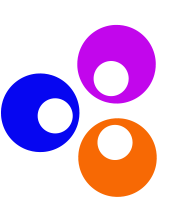“Wise executives tailor their approach to fit the complexity of the circumstances they face.”
-David J. Snowden and Mary E. Boone
Workplaces are getting more complex. We need to make decisions faster, with more data points and more often than ever. This spurs the need to connect employees and provide them with knowledge sharing solutions that allow employees to find information when they need it, increase productivity and align teams.
While eliminating information silos and ensuring that everyone’s on the same page in terms of available information is important, this is only part of the story. People have a lot of experience, knowledge and skills that are not codified to be readily available for others to access and use. This tacit knowledge is often the most valuable resource that employees use to resolve their daily challenges but they keep it to themselves. It enables them to address emerging issues that go beyond simple answers that can be found on the organization’s knowledge sharing platform.
Even if you post company announcements, policies, procedures and other documentation in one centralized, searchable place hoping that everyone is moving in the same direction, you will soon realize there is more to be done. Simple problems for which solutions are known and there is agreement how to apply them belong to the best practice categories. These can be found on the company’s knowledge platform. But what about the problems that are not so simple, that fall into the complicated and complex category?
Peer learning may be the answer. Traditional learning is rigid and reinforces what is generally known. Peer learning is flexible and allows emergent and divergent ideas to be shared and discussed.
Complicated problems might have several “correct” solutions. Here, there is a relationship between cause and effect, but it may not be visible to everyone, because the problem is indeed complicated. For example, you might see several symptoms of a problem but not know how to fix it. A peer group composed of your employees who have experienced the problem may be able to propose a new way of solving it (a better practice) when they put their heads together.
Complex contexts are often unpredictable, and rather than trying to control the situation or insisting on a plan of action, it’s often best to be patient, look for patterns, and encourage a solution to emerge. It can be helpful to conduct small experiments and accept failure as part of the learning process. Your peers in the organization will be best suited to help you out.
We may be relying too heavily on experts in complicated and complex situations, while dismissing or overlooking creative solutions from our own employees. They are immersed in the challenges and are most interested in finding a solution. To take advantage of this, use person-to-person knowledge sharing tools such as peer learning groups to ensure that everyone’s views are heard, and various experiences are shared. By doing this you will engage your employees in creative problem solving and mine the tacit knowledge within your organization that goes beyond information sharing and best practices.
In reflection,
Peter
Peter Korynski is the Co-Founder and Chief Program Officer of the Peer Learning Institute that helps managers increase performance, productivity and customer satisfaction through peer learning and knowledge sharing. For more information, please visit https://peerlearninginstitute.com.





